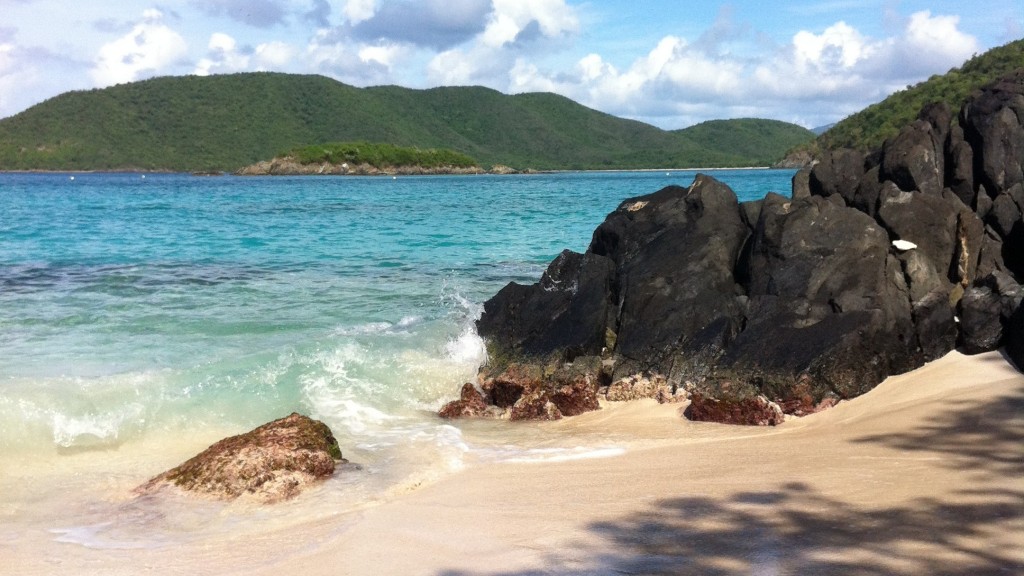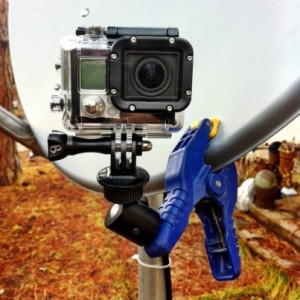Shooting Underwater in the Virgin Islands
Tropical Vacation
After a pleasant Thanksgiving in New England, Athena and I spent a week exploring and snorkeling in Virgin Islands National Park on St. John, USVI. Even though this was truly a vacation and NOT a work trip, I did bring along two GoPro point-of-view HD video cameras & accessories to document the fun. These are the small, rugged and low priced cameras that are used in many action sports mounted to helmets, bikes, skis, etc. Two weeks earlier, I had found a brand new Hero 3 Black Edition at a Best Buy in Gilroy, California. I’d gone to nearly ten Best Buys that week to finally find the Black Edition, which was not officially shipping yet! I could have shot the whole trip with just the Hero 3, but since it was a newer camera, I wasn’t sure about power draw or access to electricity that I’d have on the trip, so I also brought my Hero 2 as a back-up that I mainly used as a surface camera. Even though all GoPro cameras are water-proof, many folks don’t realize that the Hero 1 and 2 can’t really shoot underwater due to the curved plastic lens cover. GoPro just released a new underwater housing for these older cameras, and it’s included with all the new Hero 3’s.
For Camera Nerds
With two exceptions, all footage was shot at 1080p, some at 30 frames per second, but most underwater footage was over-cranked to 60 fps (which you also can’t do on a Hero 2.) Once it was slowed down, it really helped stabilize the handheld swimming shots and added a little slow motion grandeur to the action. There are two shots that are 720p 120 fps, which really helped stabilize my jerky underwater movements, but definitely made things a little too soft. The camera can also shoot 2.7K and even 4K footage, but at only 15fps, which seems strangely impractical. I didn’t use any of these settings on this trip, but I will play with them more in the future. In particular, I’m wondering if 2.7K 30p footage could be zoomed in and stabilized in post, and if this would be better than just over-cranking the 1080p. I think in the future, I will most likely run this camera at 1080p 60 fps for most work.
Since I was also concerned about running out of memory and power, plus buggy firmware (this was a VERY new camera), I did NOT shoot with the new ProTune setting. In retrospect, I regret this decision, mainly for the variations in white balance that happen underwater, at different depths and as clouds passed between the sun and water. With ProTune, I could have locked the white balance instead of having it always running on auto. This was my first time shooting video underwater, and since I didn’t bring a computer on the trip, I wasn’t able to look closely at the footage in the field, and I hadn’t considered how variable the light would be, especially as I dove down to 20 or more feet.
Camera Support
My favorite thing on this shoot was a camera mount made from a spring-loaded clip and a small ball-head. I clipped it to numerous vehicles and structures for both video and time-lapse, and it also made a decent handle for hand-held shots. For underwater shots, especially at depth where I couldn’t stay for long, I clipped the camera to a flat rock which I set down in front of some awesome scene and swam away. Eventually, the spooked fish would return, and I’d let the camera roll for a couple of minutes before going back down to retrieve the camera. I really think these shots do the best job of conveying the underwater world of Virgin Islands National Park.




Comments are closed.